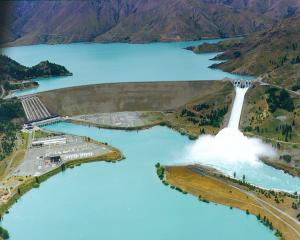
And now both the Otago Regional Council (ORC) and Environment Canterbury (Ecan) have launched online mapping tools as another way for people to report sightings of the invasive species.
ORC North Otago environmental monitoring officer Simon Stevenson said the pest species had ``several pathways'' to leave South Canterbury's 900,000ha wallaby containment area, and while a sudden increase in sightings could ``partly be attributed to improved public awareness'' after an ORC wallaby awareness campaign ``the initial rise in sightings began prior to this campaign''.
``We have seen a dramatic increase in sightings in Otago since 2016, across the northwestern regional boundary from the Oamaru coast to Hawea,'' he said in an email. ``No effective deterrent or barrier exists to impede wallaby from crossing the Waitaki hydro dams or the Kurow and Waitaki bridges, providing pathways to the south side of the Waitaki River for opportunistic animals.
``Additionally an uncontained population currently resides on the south side of the Waitaki River, comprising individuals that have crossed the Waitaki dams.''
Last week, the ORC added a GIS locator to its website for people to record sightings.
And in November Ecan created a similar ``Wallaby geomap'' to improve its understanding of the distribution of wallabies outside South Canterbury's containment area.
Ecan biosecurity team leader Brent Glentworth said it would take a while before the new app started to create a picture of how widespread the pest problem was.
The council had printed about 100 signs to advise of the new online reporting tool - but only about 10 had been placed to date.
Further, many Canterbury farmers would continue to phone or email sightings in, but the council wanted to provide another option for those in the bush.
``We don't want to say `Oh, people saw a wallaby six months ago', because our chances of catching up with that wallaby are pretty slim,'' Mr Glentworth said. ``That is the real positive about the app is that it can be so quick.
``We want to know as close as possible to the time [the wallaby was seen].''
Wallaby reports were followed up by council staff, but also the work to try to eliminate established populations outside the containment area was based on reported sightings.
Next month, men with dogs would scour problem areas for three to four weeks, in a wallaby cull.
The method, employed every six months, remained the most effective tool to prevent the pest's spread.
And yet despite growing concern about the potential impact of the pests, wallaby sightings remained rare, Mr Glentworth said.
``They [wallaby outside the containment area] really are quite far and few between,'' he said. ``Although there is an increasing trend for those sites like the south bank of the Waitaki and the population up at the Gamack Range, we get relatively few reports.''
Mr Stevenson said wallaby had the potential to cause ``significant adverse economic effects'' if populations were established in Otago.
A Ministry for Primary Industries report released in 2016 predicted the economic benefit to the South Island by controlling wallaby would be more than $23.5million annually, but if the pests were left alone, the economic cost would be about $67million within 10 years.
Council environmental monitoring and operations director Scott MacLean told the Otago Daily Times in November the council did not believe there was an established population within the council's boundaries.











